25 August 2020
Each year, 1.5 million people around the world are affected by liver malignancies. For patients who cannot receive surgery or chemotherapy, radioembolization can be a treatment option. Radioembolization is a technique in which tiny radioactive beads (microspheres) are injected in the hepatic artery via a catheter and flow to the tumor in the liver. In the tumor, the microspheres become trapped in the capillaries, where they irradiate the liver tumor from within. For this reason, radioembolization is also referred to as selective internal radiation therapy (SIRT).
Varying results
The effect of radioembolization depends on the exact location where the microspheres become trapped in the liver. This concerns several questions: Where in the hepatic vasculature should the microspheres be injected? At what speed should they be administered? How are they distributed? “In recent years several clinical trials have shown varying results for radioembolization. This probably has to do with the distribution of the microspheres in and around the tumor,” explains project coordinator Frank Nijsen of Radboud university medical center’s Department of Medical Imaging. “With this research, we would like to gain more insight into the factors that influence the distribution of the microspheres in the liver. Once we can predict microsphere distribution, it will be possible to target the irradiation of the tumor tissue more precisely, translating to fewer side effects in patients and more effect of the therapy in terms of stop of tumor growth or even tumor shrinkage.
Making treatment visible
Radioactive yttrium and holmium microspheres are most commonly used for radioembolization. The latter were developed by Quirem Medical, a company that is also involved in this project, along with Terumo, Organ Assist, Femto and Siemens Healthineers. An important characteristic of the holmium microspheres is that, unlike yttrium microspheres, they are easy to visualize on MR and CT and SPECT images. Particularly with MRI, we are able to measure and analyze microsphere distribution in the liver very precisely and in high resolution. Nijsen, “This project fits perfectly within the research that we are doing at the Radboud university medical center on image-guided radionuclide interventions and the improvement of techniques in order to arrive at the best outcomes for patients.”
Reliable computer model
This research program includes fundamental, experimental and patient-related research. “We use experimental set-ups, phantoms, animal livers left over from butchering and not clinically usable human livers that become available in the process of liver donation and liver transplantation,” continues Nijsen. “All knowledge that we develop in this project is intended to ultimately result in a computer model. Based on the patient’s vasculature, this computer model will be able to predict where the catheter should be placed and how many microspheres should be used to provide the optimal treatment—a high activity in the tumor and minimal activity in the healthy liver tissue.”
Better treatment
The research on optimal treatment will be concluded with the actual treatment of patients in the special MITeC operating rooms at Radboud university medical center. Nijsen, “There, we will test whether our computer model does indeed allow a better patient treatment. This research is to result in a validated, generally applicable treatment method, with the objective of achieving better and more consistent results with radioembolization.”
NWO’s Open Technology Programme is open to excellent research, with a view to the possible application of results. The program offers companies and other organizations an accessible way of connecting with scientific research that is intended to generate applicable knowledge. Research project: Understanding Liver Treatment to Improve Microsphere Optimal distribution (Ultimo)
For additional information:
Radboud university medical center:
https://www.radboudumc.nl/research/radboud-technology-centers/image-guided-treatments/mitec
https://www.radboudumc.nl/en/research/themes/tumors-of-the-digestive-tract
University of Twente:
https://www.utwente.nl/en/et/tfe/research-groups/efd/
https://www.utwente.nl/en/tnw/m3i/members/
UMC Groningen:
https://www.umcg.nl/EN/corporate/Paginas/default.aspx

Each year, 1.5 million people around the world are affected by liver malignancies. For patients who cannot receive surgery or chemotherapy, radioembolization can be a treatment option. Radioembolization is a technique in which tiny radioactive beads (microspheres) are injected in the hepatic artery via a catheter and flow to the tumor in the liver. In the tumor, the microspheres become trapped in the capillaries, where they irradiate the liver tumor from within. For this reason, radioembolization is also referred to as selective internal radiation therapy (SIRT).
Varying results
The effect of radioembolization depends on the exact location where the microspheres become trapped in the liver. This concerns several questions: Where in the hepatic vasculature should the microspheres be injected? At what speed should they be administered? How are they distributed? “In recent years several clinical trials have shown varying results for radioembolization. This probably has to do with the distribution of the microspheres in and around the tumor,” explains project coordinator Frank Nijsen of Radboud university medical center’s Department of Medical Imaging. “With this research, we would like to gain more insight into the factors that influence the distribution of the microspheres in the liver. Once we can predict microsphere distribution, it will be possible to target the irradiation of the tumor tissue more precisely, translating to fewer side effects in patients and more effect of the therapy in terms of stop of tumor growth or even tumor shrinkage.
Making treatment visible
Radioactive yttrium and holmium microspheres are most commonly used for radioembolization. The latter were developed by Quirem Medical, a company that is also involved in this project, along with Terumo, Organ Assist, Femto and Siemens Healthineers. An important characteristic of the holmium microspheres is that, unlike yttrium microspheres, they are easy to visualize on MR and CT and SPECT images. Particularly with MRI, we are able to measure and analyze microsphere distribution in the liver very precisely and in high resolution. Nijsen, “This project fits perfectly within the research that we are doing at the Radboud university medical center on image-guided radionuclide interventions and the improvement of techniques in order to arrive at the best outcomes for patients.”
Reliable computer model
This research program includes fundamental, experimental and patient-related research. “We use experimental set-ups, phantoms, animal livers left over from butchering and not clinically usable human livers that become available in the process of liver donation and liver transplantation,” continues Nijsen. “All knowledge that we develop in this project is intended to ultimately result in a computer model. Based on the patient’s vasculature, this computer model will be able to predict where the catheter should be placed and how many microspheres should be used to provide the optimal treatment—a high activity in the tumor and minimal activity in the healthy liver tissue.”
Better treatment
The research on optimal treatment will be concluded with the actual treatment of patients in the special MITeC operating rooms at Radboud university medical center. Nijsen, “There, we will test whether our computer model does indeed allow a better patient treatment. This research is to result in a validated, generally applicable treatment method, with the objective of achieving better and more consistent results with radioembolization.”
NWO’s Open Technology Programme is open to excellent research, with a view to the possible application of results. The program offers companies and other organizations an accessible way of connecting with scientific research that is intended to generate applicable knowledge. Research project: Understanding Liver Treatment to Improve Microsphere Optimal distribution (Ultimo)
For additional information:
Radboud university medical center:
https://www.radboudumc.nl/research/radboud-technology-centers/image-guided-treatments/mitec
https://www.radboudumc.nl/en/research/themes/tumors-of-the-digestive-tract
University of Twente:
https://www.utwente.nl/en/et/tfe/research-groups/efd/
https://www.utwente.nl/en/tnw/m3i/members/
UMC Groningen:
https://www.umcg.nl/EN/corporate/Paginas/default.aspx
Related news items
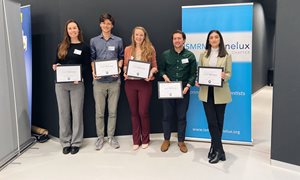
Elina Stamatelatou won first price oral presentation
30 May 2022 Elina Stamatelatou from the Department of Medical Imaging has won the first price for oral presentations with her presentation “Multivariate Curve Resolution (MCR) application for prostate cancer localization”. go to page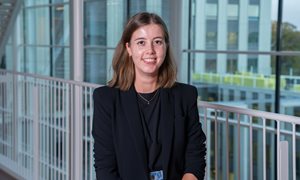
Milou van Riswijk wins a research grant at the Champions’ Den at the ESGE days 2022
23 May 2022 At the Research Champions’ Den at the European Society of Gastrointestinal Endoscopy (ESGE) days 2022 ten researchers presented their projects to a panel of ESGE top international experts, in a bid to win an ESGE Research Grant. go to page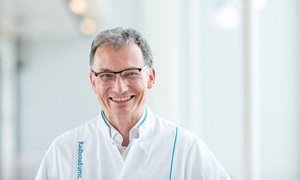
Mathias Prokop appointed department head of Radiology UMCG He also remains department head of Imaging Radboudumc
11 April 2022 As of May 1, Mathias Prokop will become Department Head of Radiology at UMCG. He will fulfill this role in addition to his current position as Professor and Department Head of Imaging at the Radboudumc. Jurgen Fütterer will assume the daily management of the Radboudumc clinic. go to page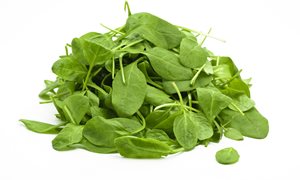
What can we learn from rural Tanzanian food?
23 December 2021 What we eat affects our bodies. A diet high in plant based products and low in fat offers health benefits and prevents lifestyle diseases, such as cardiovascular disease. This is what Quirijn de Mast shows based on his research in Africa. go to page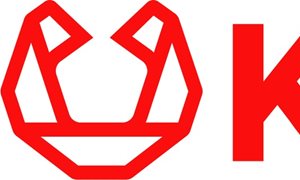
Awarded KWF grants for Radboudumc researchers
18 December 2019 KWF is investing 2.7 million euros in five different studies at Radboudumc. The awards are part of the new round of funding by DCS, in which over 34 million euros will be granted to Dutch cancer research. We congratulate our researchers with this funding and wish them success with their great work. go to page